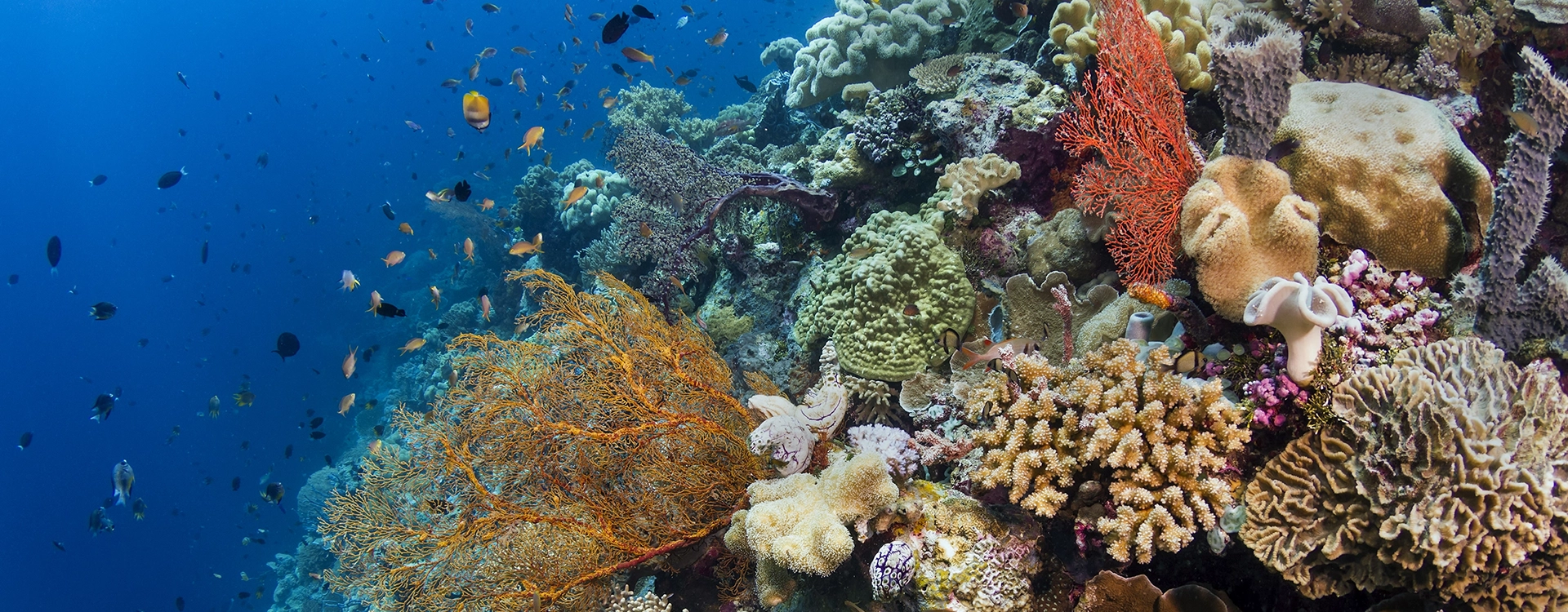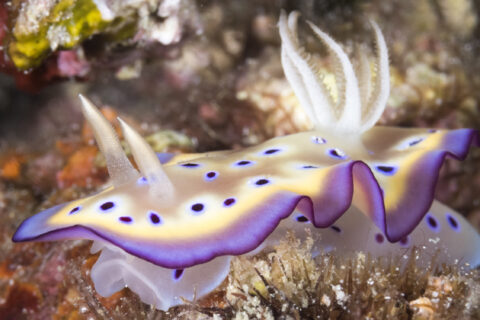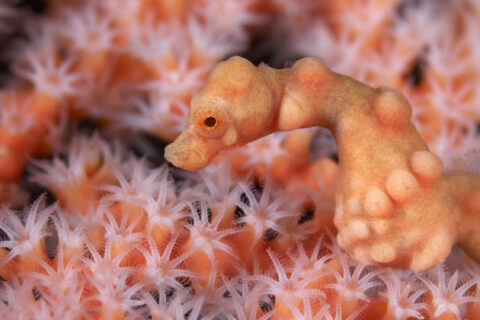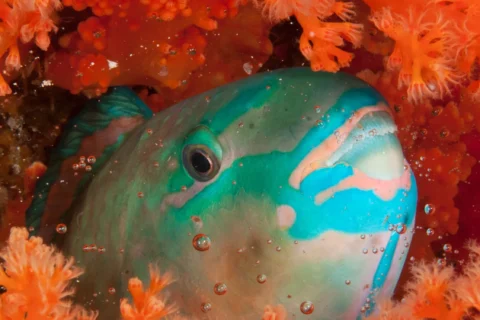As anyone who has visited Wakatobi Dive Resort can attest, the surrounding reefs are covered in a thick and diverse carpet of corals. The overall health and near-pristine condition of these reefs is the result of a proactive conservation program funded by portions of resort revenue. But protection alone doesn’t account for the tremendous diversity of coral species divers and snorkelers will discover when they visit. The other half of the equation is location, and that’s where Waktaobi has the real advantage. Marine biologist and world-renowned photojournalist, Dr. Richard Smith, shares his expertise in this first of two articles about corals and why Wakatobi is an ideal place for coral health and diversity.
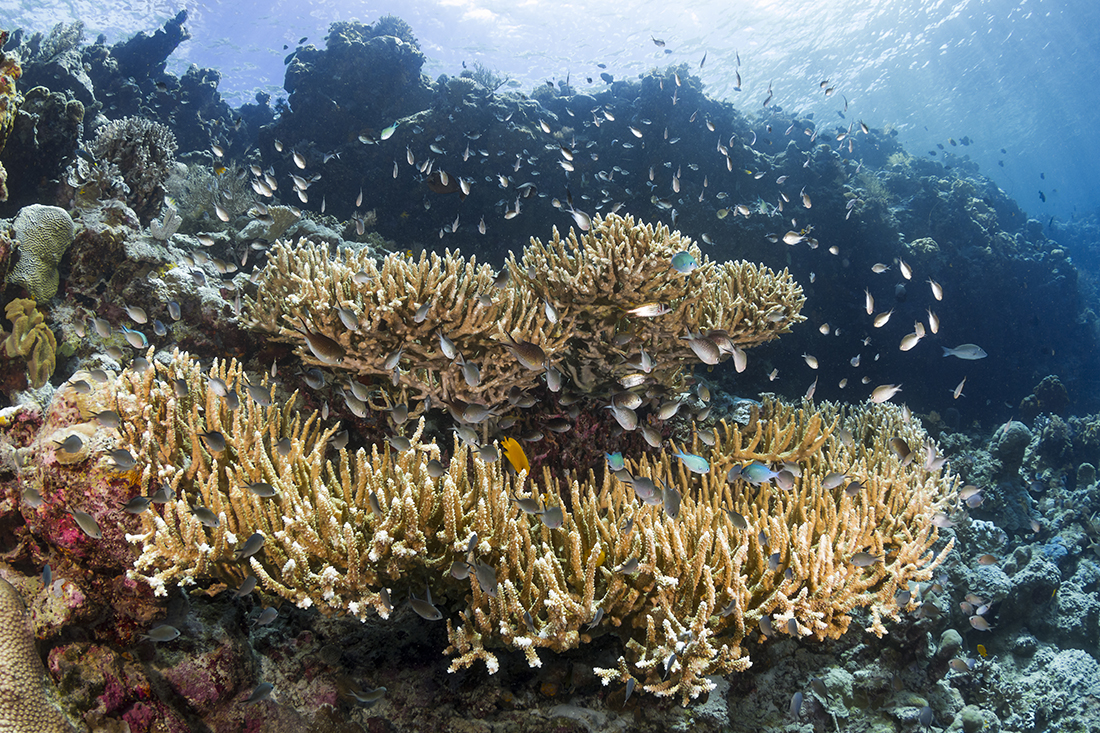
The Right Place
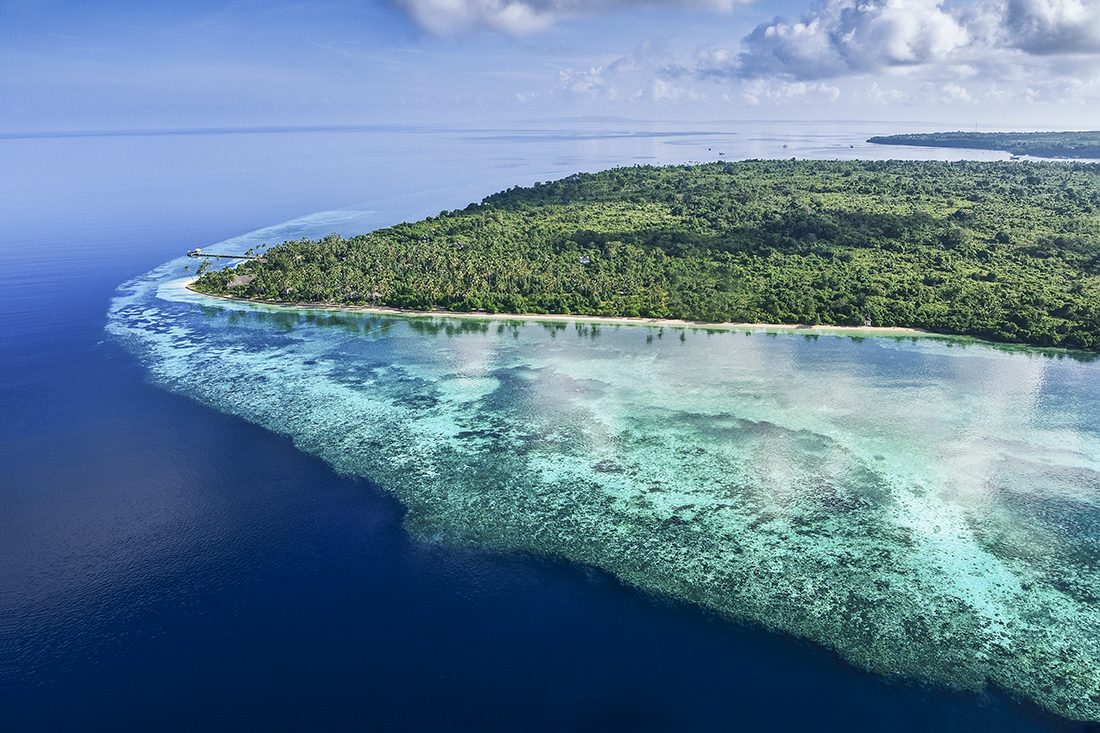
Wakatobi is located at the heart of the region known as the Coral Triangle, an area that includes the Philippines, Indonesia, Malaysia, Papua New Guinea and the Solomon Islands. The waters surrounding these islands lay claim the highest degree of marine bio-diversity in the world, including fish, invertebrates and corals. The farther you are away from this region the fewer the number of coral species you will find. It’s been said that you can see more coral species on one dive at Wakatobi as can be found in the entire Caribbean, and the facts back this up. More than 75 percent (605 species) of all the world’s reef building coral species are found in the Coral Triangle, by comparison just 8 percent (65 species) exist in the Caribbean.
It’s been said that you can see more coral species on one dive at Wakatobi as can be found in the entire Caribbean, and the facts back this up.
Indonesia itself can claim nearly 20 percent of the world’s coral reefs, thanks to near-ideal conditions for the growth of the type of corals that build reefs, rather than simply grow on existing rocky surfaces. More on that further on. The specific environmental conditions needed by reef building corals are quite narrow, which is why you won’t find them in many parts of the ocean. There are five main criteria for coral survival: warmth, clear water, constant salinity, a hard surface and ample sunlight. These requirements come together in the waters of Wakatobi, where the underwater environment is ideal for both hard and soft coral growth.
Hard & Soft Corals
Corals fall into two general categories: hard and soft. It is the hard corals that actually build reefs. And though we talk about coral growth, these organisms are actually animals, not plants. These animals live in colonies within hard shells of calcium carbonate, which they secrete to provide protection. They procure nutrients in two different ways, allowing them to thrive in clear water, which is often nutrient poor, but bathed in sunlight.
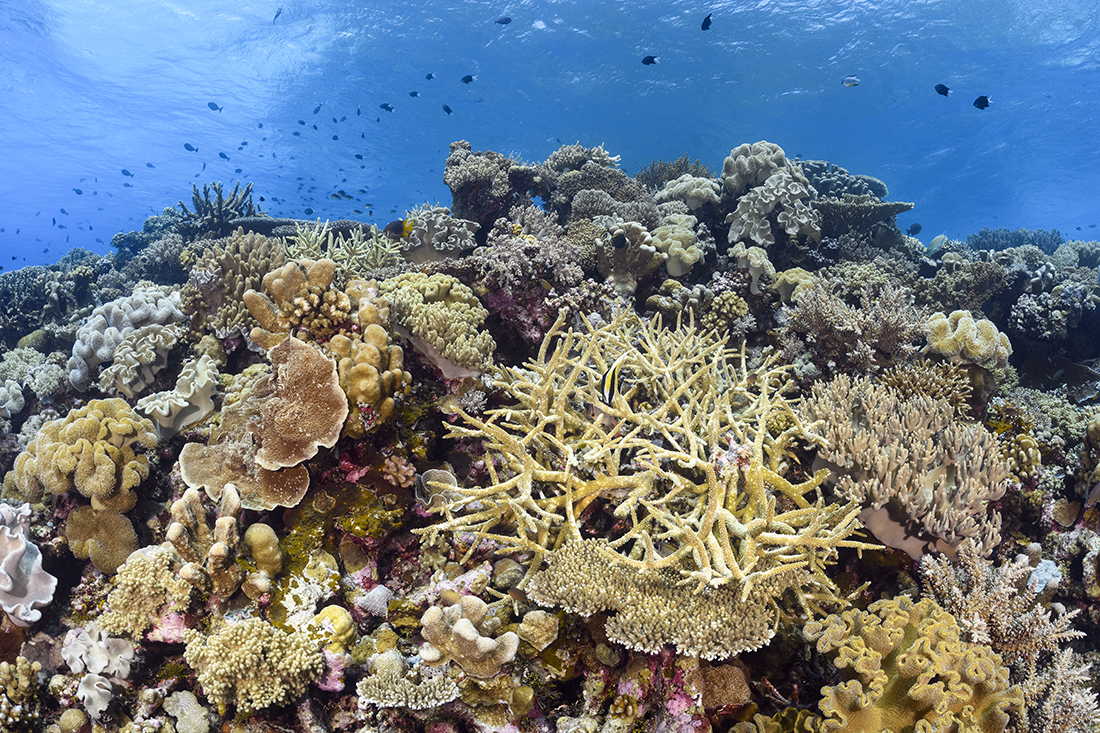
To harvest the energy of the sun, hard corals cultivate a type of symbiotic algae known as zooxanthellae. These microscopic algae live within the cells of the coral and when bathed in sunlight, photosynthesize like any other plant and produce food for the coral. In return, the coral directs its own waste products to the algae, acting like a fertilizer.
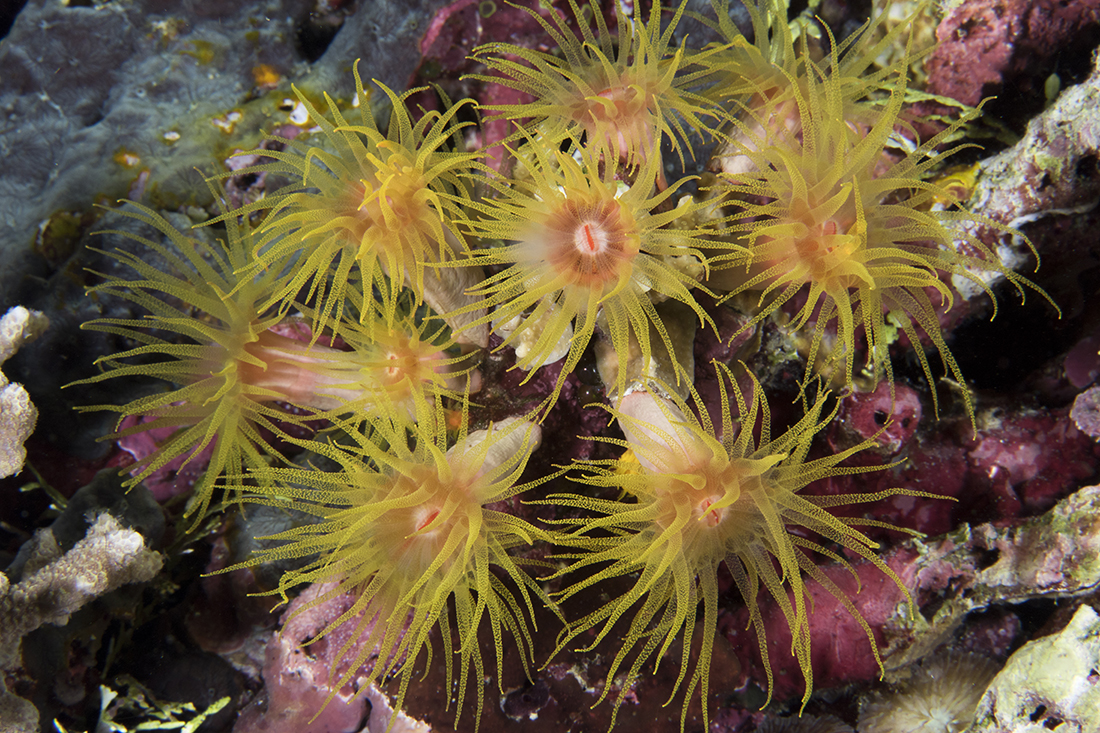
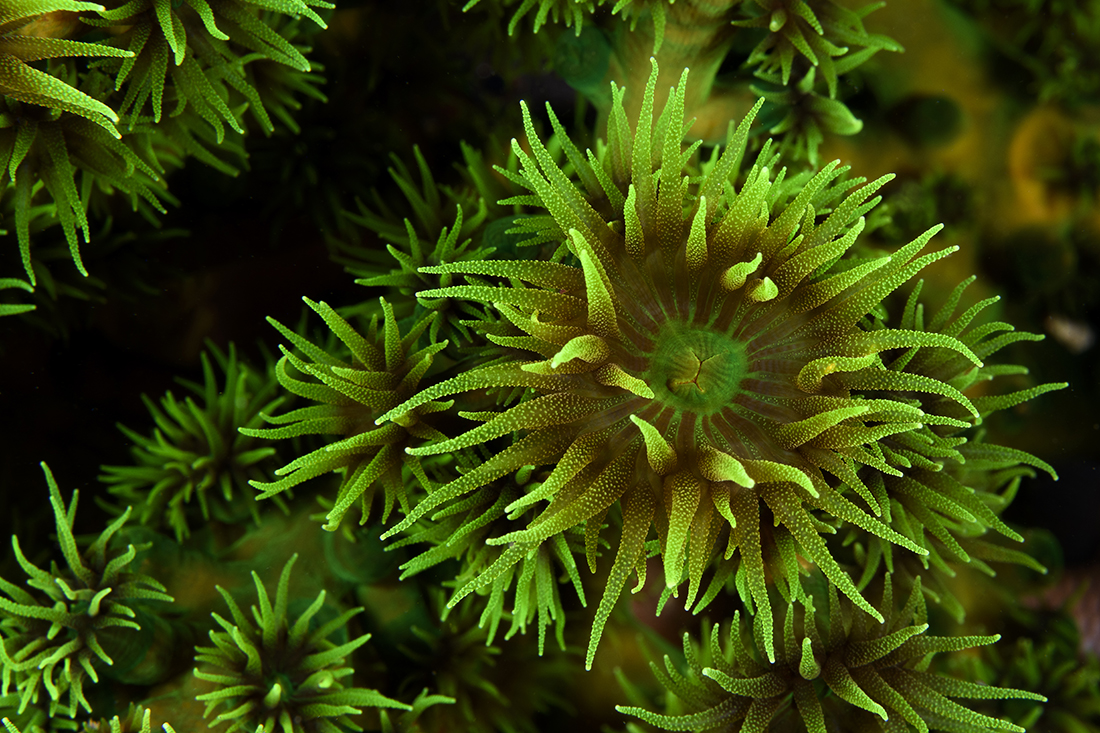
The feeding polyps of hard corals are equipped with small tentacles that give them a flower like look, which they will extend out of their protective shelters to harvest any nutrients that float by. You are more likely to see these polyps extended at night, as this is when a feeding coral has less chance of getting nipped by a hungry fish.

While the hard corals are the reef builders, it is the soft corals that enliven reefs in waves of undulating color. While hard corals extrude a calcium carbonate skeleton, soft corals are supported by a skeleton consisting of siliceous spicules. This allows them to grow outward into fan-like shapes with large surface areas. Whereas hard corals are limited in where they can grow by light levels, soft corals feed on organic matter suspended in the water column. When the currents are running, soft corals swell and their polyps begin to trap suspended particles. As a result, they thrive in areas of higher current, can tolerate greater turbidity within the water, and don’t require abundant sunlight. This is why you will often find huge sea fans, long whips of wire coral and tree-like growths of black coral as you drop deeper on the reefs.
Wakatobi’s Coral Diversity
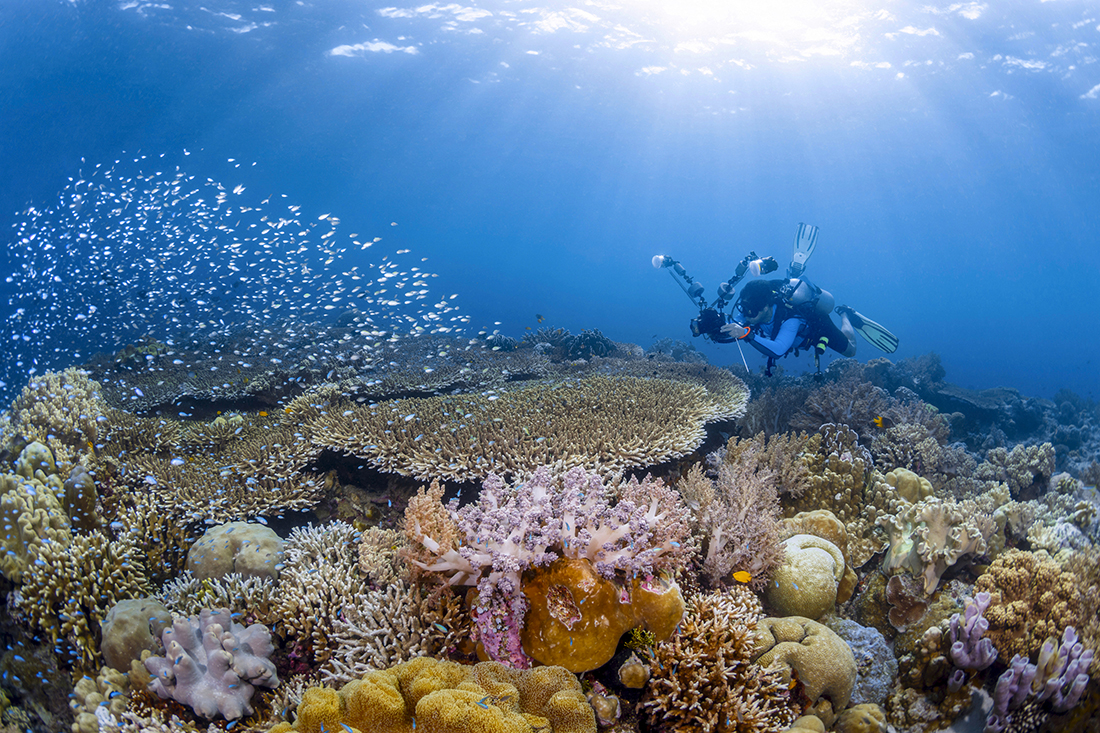
Each species of hard and soft coral has its own preferred environmental conditions, which turns into an opportunity to see everything from extensive branching and table coral growth, particularly where the seamount reaches shallow water. This high light environment is what hard corals favor for and zooxanthellae algae to flourish. A further down, divers will come across large basins of cabbage coral extending along one side of the seamount along with patches of soft coral, sea fans often with a mix of colorful sponges.
Since Wakatobi has many different microhabitats it has a correspondingly high diversity of corals. Here is just a sampling of what you will find on some of the area’s favorite dive sites.
House Reef: The sloping rampart that parallels the resort’s beach creates a perfect habitat for a mixture of hard and soft corals. Where light strikes the sheer wall, hard corals proliferate and where overhangs shade the reef, soft-bodied corals dominate. The well-lit shallows are of the domain of hard corals such as branching and staghorn acropora species.

Roma: This is a fantastic site to see unique hard coral formations. There are large areas of pavona and potato coral, which act as refuges for many of the reef’s inhabitants. Follow the ridge, which is littered with profuse coral growth, and you’ll eventually reach an enormous rose-like growth of Turbinaria coral that absolutely dwarfs a diver.

Magnifica: The ridges and chutes along the wall of Magnifica offer some of the best soft coral growth around Wakatobi. In shallower water, beige leather corals are found all along the reef crest. Leather corals get their color from symbiotic algae, which dictate that their growth remains only in shallow or well-lit areas.
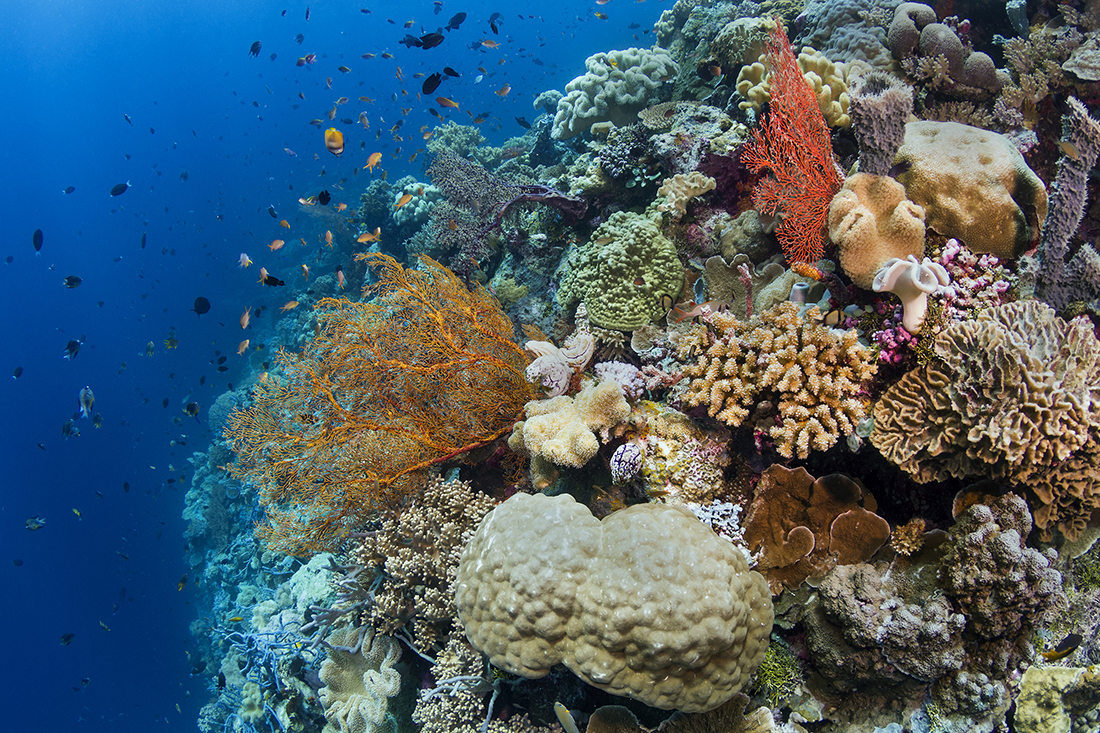

While the hard corals are the reefs buildings, it is the soft corals that enliven reefs in waves of undulating color, seen here at Magnifica. Photos by Walt Stearns (above left) and Norbert Prodst (above right).
Xenia coral, seen in large patches on the sandy areas at Dunia Baru, has sturdy stalks up to 3”³ long. The end of the stalk is covered with a crown of feathery polyps, which open and close in an attractive pulsing or pumping motion. Groups of these stalks form colonies that can spread into large mats. Photo by Richard Smith
Dunia Baru: The topography of Dunia Baru is quite different from other sites around Wakatobi, which is reflected in the coral growth found there. The plateau-like profile provides ample light for hard coral growth up top where vast swathes of branching Acroporas proliferate.

The sandy area atop the plateau is covered in large swatches of Xenia coral, which are sometimes known as pulse corals, as their polyps pulse to catch food. Xenia corals harbor a wide range of reef-dwelling organisms, and are worth close examination.
These sites represent just a fraction of the many different coral reef environments you will discover around Wakatobi. Each dive will reveal yet another facet of this amazing environment, and the more you learn about coral growth and diversity, the more you will be able to appreciate the subtle and sometimes not-so-subtle differences you discover.
Wakatobi has something for everyone. Contact our office at office@wakatobi.com, or complete a trip inquiry at wakatobi.com. A guest experience representative will be in touch with you to answer any questions and provide information about your next dream dive vacation.
Follow us on Facebook and Instagram.
View Wakatobi conservation videos on our YouTube Channel.
